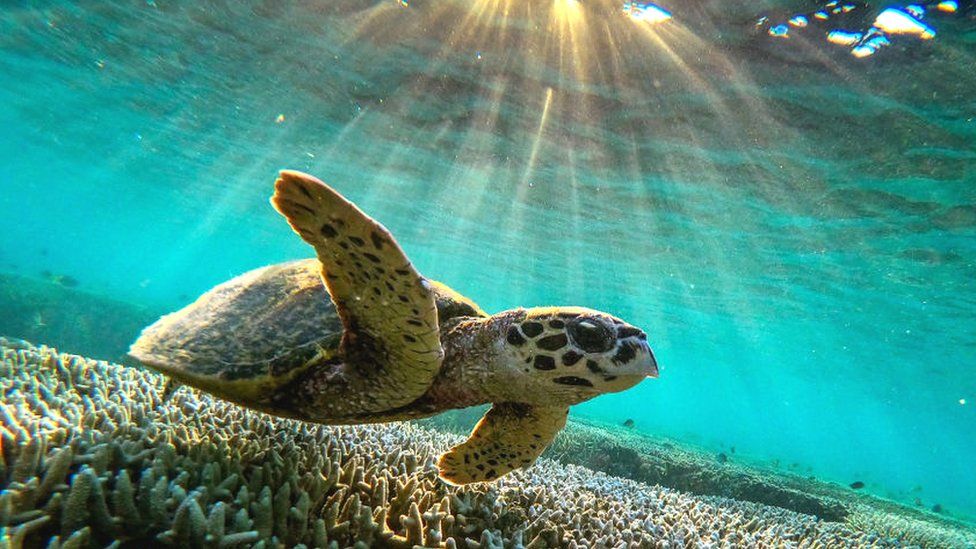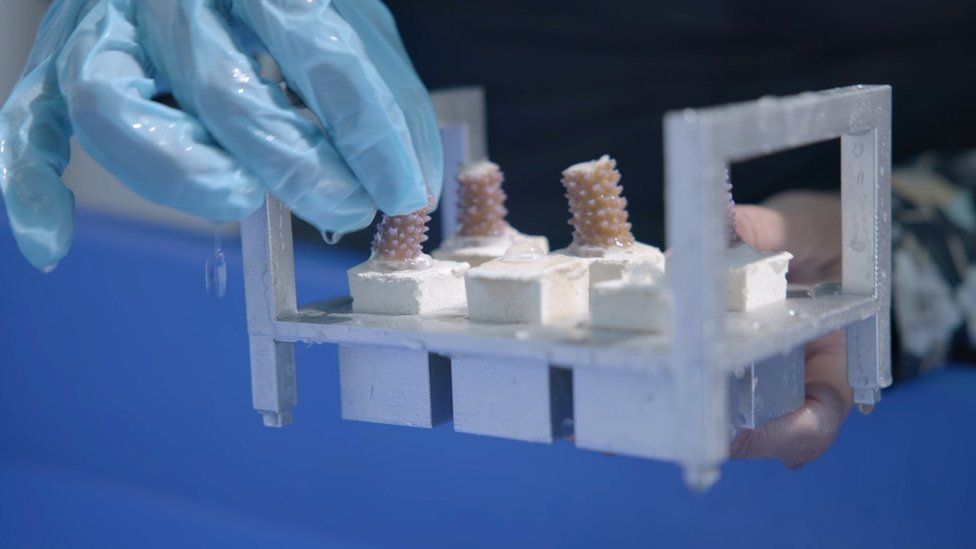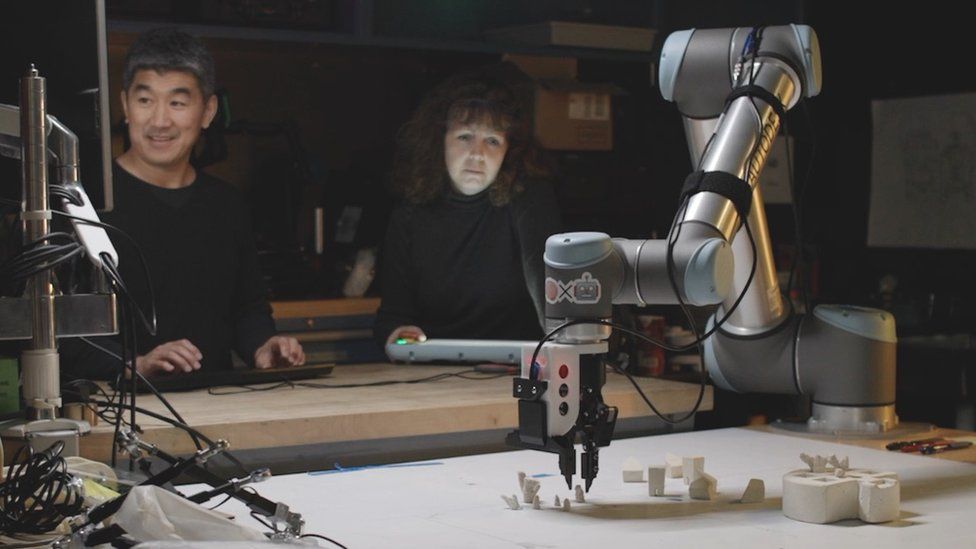Robots are trained to help revive coral reefs

“It’s a really special part of the world,” says marine biologist Taryn Foster from the Abrolhos Islands, 40 miles from the coast of Western Australia.
“There are no palm trees or luscious vegetation. But once you get in the water, you see all these tropical species of coral and fish.”
Corals are animals called polyps, found mostly in tropical waters. The soft-bodied polyp forms a hard outer shell by extracting calcium carbonate from the sea. Over time those hard shells build up to form the foundations of the reefs we see today.
Coral reefs may only cover 0.2% of the seafloor, but they provide a habitat to more than a quarter of marine species.
However, the creatures are sensitive to heat and acidification so in recent years, as the oceans have warmed and become more acidic, corals have become vulnerable to disease and death.
Damaged corals turn white, a process known as bleaching, something Ms Foster has witnessed first hand.
According to the Global Coral Reel Monitoring Network, a 1.5C increase in water temperature could see losses of between 70% and 90% of the world’s reefs.
Some scientists think, that by 2070, they’ll be gone altogether.

“Climate change is the most significant threat to coral reefs around the world,” says Cathie Page from the Australian Institute of Marine Science’s (AIMS).
“Severe bleaching events caused by climate change can have very negative effects,” Ms Page continues, “and we don’t have good solutions yet”.
Coral restoration efforts usually involve transplanting tiny corals, cultivated in nurseries, on to damaged reefs.
However the work can be slow and costly, and only a fraction of the reefs at risk are getting help.
In the shallow waters of the Abrolhos Islands, Ms Foster is testing a system she hopes will revive reefs more quickly.

It involves grafting coral fragments into small plugs, which are inserted into a moulded base. Those bases are then placed in batches on the seabed.
Ms Foster designed the base, which is shaped like a flat disc with grooves and a handle, and is made from a limestone-type concrete.
“We wanted it to be something we could mass produce at a reasonable price,” explains Ms Foster. “And easy for a diver or a remotely-operated vehicle to deploy.”
So far the results have been encouraging.
“We’ve deployed several different prototypes of our coral skeletons. And we’ve also tested this on four different species,” she explains. “They’re all growing wonderfully.”
“We’re bypassing several years of calcification growth that it takes to get to that base size,” she says.

Ms Foster has formed a start-up firm called Coralmaker and hopes that a partnership with San Francisco-based engineering software firm Autodesk will accelerate the process further.
Their researchers have been training an artificial intelligence to control collaborative robots (cobots), which work closely alongside humans.
“Some of these processes in coral propagation are just repetitive pick and place tasks, and they’re ideally suited to robotic automation,” says Ms Foster
A robotic arm can graft or glue coral fragments to the seed plugs. Another places them in the base, using vision systems to make decisions about how to grab it.
“Every piece of coral is different, even within the same species, so the robots need to recognise coral fragments and how to handle them,” says Nic Carey, senior principal research scientist at Autodesk.
“So far, they’re very good at handling the variability in coral shapes.”

The next step is to move the robots out of the lab, which Ms Foster says should happen in the next 12-18 months.
However the real world presents many challenges: wet, living coral needs to be handled delicately, possibly on a moving boat, and saltwater is potentially damaging to electronics.
“We need to ensure we can shield the more vulnerable components,” says Mr Carey.
There’s also the high cost of such technology. Coralmaker is betting on demand from the tourism industry, and plans to issue biodiversity credits, which work similarly to carbon credits.
“To stay ahead of the curve and enable coral reefs to survive a warming future requires a substantial investment of time, money, and human capital,” says AIMS scientist Cathie Page.


Her organisation, and others are exploring methods such as coral seeding for larger-scale restoration work.
Coral spawn are collected and fertilised in a lab. The larvae are grown into baby corals in a nursery, before then sowing them onto degraded reefs.
“Mortality in a coral’s first year of life is very high. Coral seeding aims to boost the number of young corals on a reef, enhance their survival and growth,” says Ms Page.
Breeding of more resistant “super coral”, as well as radical ideas like geo-engineering clouds to reflect sunlight and protect coral from the heat, are among other initiatives being considered.
One promising innovation involves sound. Fish and other sea creatures living on reefs make a vast range of noises, like chattering, cracking and whooping.
Researchers have trained computer algorithms to analyse underwater audio recordings and can detect patterns that indicate how healthy a reef is. In Australia, AIMS is taking that a step further, through research project Reef Song, where underwater loudspeakers placed on damaged reefs play healthy sounds to help attract fish and boost reef replenishment.
“We are trying to solve one of the most complex ecological problems on the planet,” says Ms Page, who’s still hopeful about restoration efforts.
“It is important to remember there is no silver bullet solution.”
